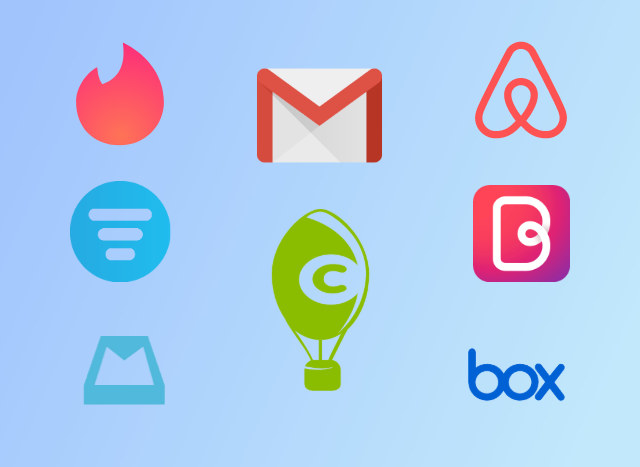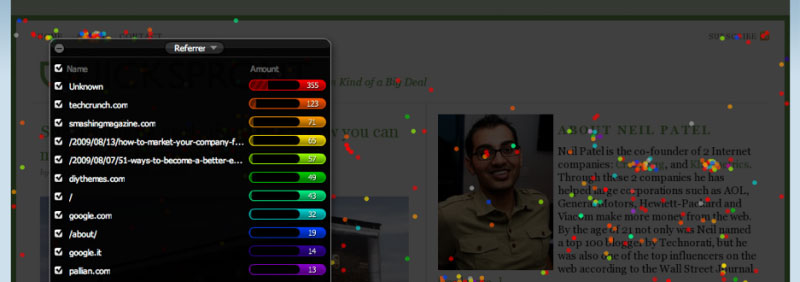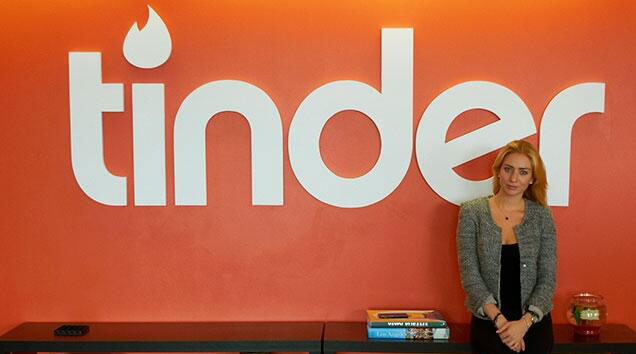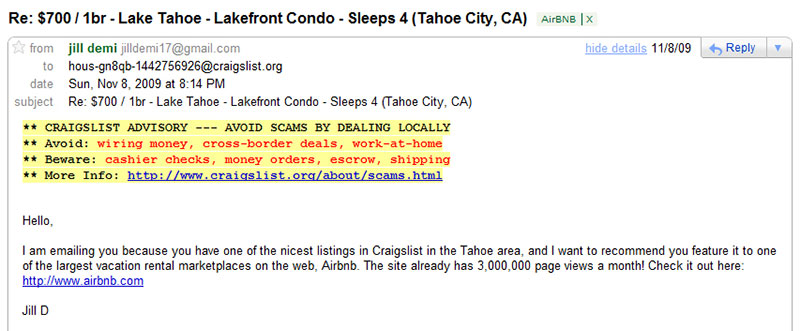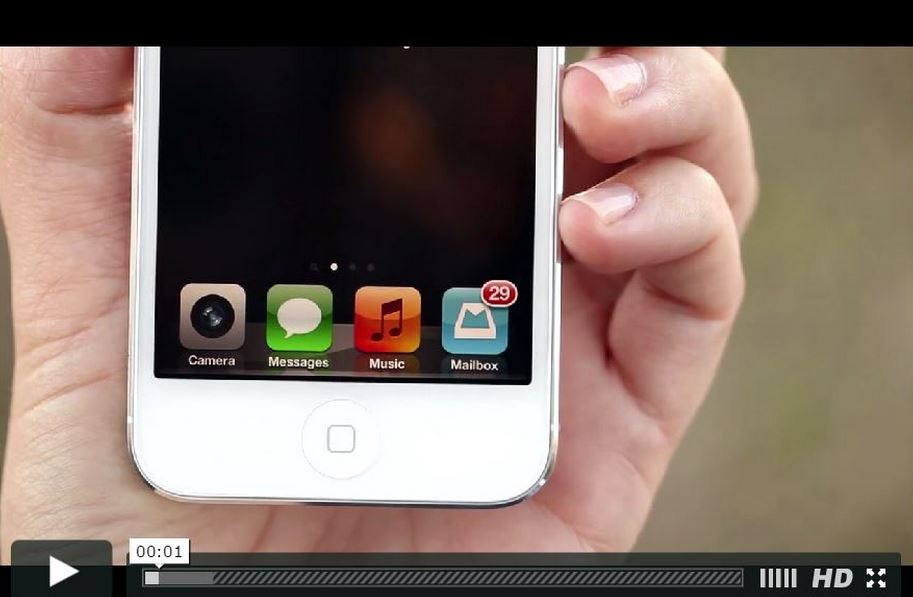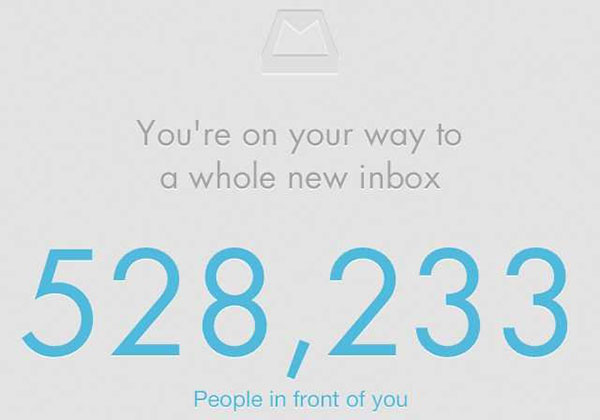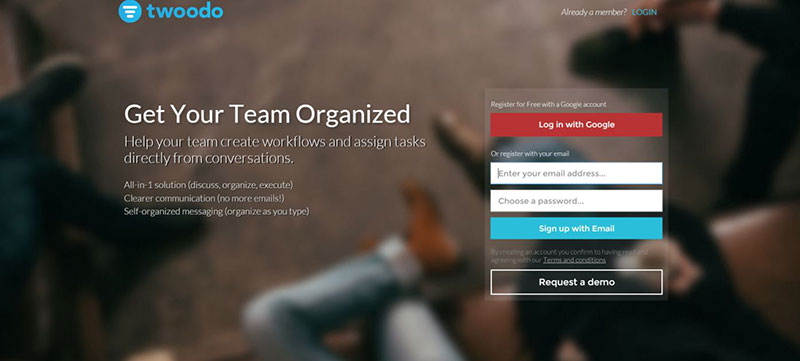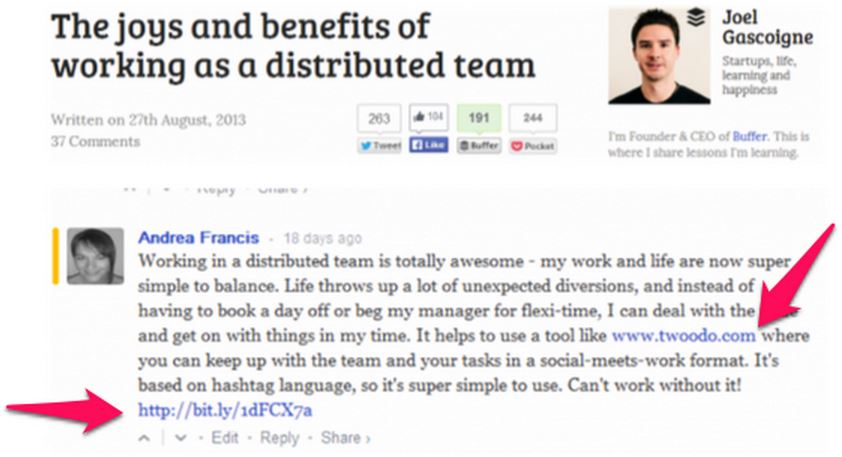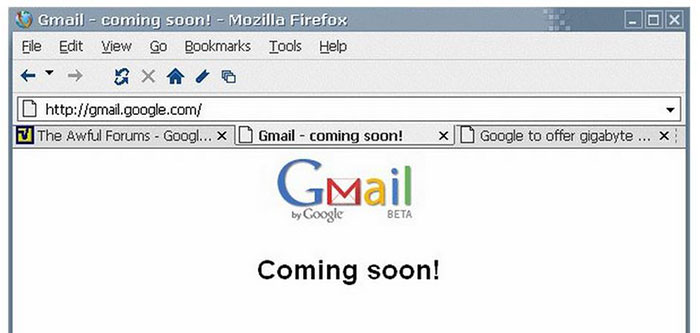Starting a business is hard.
Finding your first customers is even harder.
Every day, companies with exciting products fail.
Why?
Many reasons. Mostly, its a failure to find leads and turn those leads into paying customers.
It’s hard to imagine successful companies ever struggling to acquire customers.
But, every single behemoth, at some point, had to acquire its first customer…somehow...somewhere.
In this post we’re going to look at some real-world growth stories to understand how once-starving startups got their first customers and grew into multi-billion dollar household names.
After all, the best way to learn is to study the success stories of those who came before.
You’ll find a mix of grunt work, fake-it-till-you-make-it, genius…
And, purple cows.
#1: Crazy Egg
100,000 users with a $10,000 marketing budget
First, Crazy Egg built a signup-driven homepage. A solid value proposition and an option to get a free heat map of your site.
The price…your email address. Too easy!
How did Crazy Egg generate enough traffic to feed it’s pre-launch list building machine?
One time $10,000 ad placements on CSS gallery sites that were crawling with hundreds of thousands of web designers. They knew their target audience, found where they were online and focused all their ad spend on those placements.
It paid off.
The ads drove a huge wave of traffic to the landing pages. Crazy Egg had 20,000 emails to market to when the product launched.
But, that’s just the beginning.
Crazy Egg made a deliberate move to code their site using CSS best standards, then submitted it to the same CSS galleries. The site’s design and code framework got featured in the galleries and drove a ton of organic traffic to the site.
Next, they made a long list of popular news sites and reached out offering a free $99 account. This got the company featured on TechCrunch and Mashable.
They partnered with companies like Lunar Pages offering their customers free Crazy Egg accounts. The result, thousands of new users for each partner they signed up. These strategic partnerships catapulted the companies growth.
Finally, Crazy Egg offered industry influencers free accounts and spoke at popular conferences. No fee. Their price…. to be labeled as an event sponsor.
Crazy Egg is now used by over 200,000 businesses.
Read More: http://www.quicksprout.com/2013/05/16/how-we-grew-crazy-egg-to-100000-users-with-a-10000-marketing-budget/
#2: Tinder
From house parties to a $5 billion valuation
Source: @WLWolfe
How do you grow a mobile dating app into a $5 billion business?
Throw a house party.
Tinder got it’s first users by throwing large private parties at USC. To attend, party-goers had to install the Tinder app on their phone.
The company took it a step further.
The then-CMO Whitney Wolfe travelled to prominent campuses across the country, going to all her sorority chapters, presenting and having all the girls download the app.
Wolfe would then go to the corresponding fraternity and open the app. Members would see all the cute girls and instantly download the app.
This push got Tinder its first 15,000 users.
Read More: http://blog.referralcandy.com/2014/08/12/13-successful-companies-fought-for-first-customers/
#3: Air BnB
From air mattress to Obama O’s to $10 billion company
How did three guys go from renting air mattresses on their floor to building a $10 billion room-letting empire?
Ashton Kucher.
Kidding 🙂
It all started when it’s two founders couldn’t afford to pay rent while living in San Francisco. They decided to rent out three air mattresses on the floor and serve breakfast to their tenants.
Next, they recruited a college friend to join the team and help build the website…
…airbedandbreakfast.com was born.
The company launched the site at SXSW and got two bookings.
In 2008 Air BnB began selling cereal called “Obama O’s” before the election for $40 each raising $30,000.
Source: The Next Corner
They used this money to travel to NYC and go door-to-door taking photos of listed houses.
“When New York took off, we flew back every weekend. We went door to door with cameras taking pictures of all these apartments to put them online. I lived in their living rooms. And home by home, block by block, communities started growing. And people would visit New York and bring the idea back with them to their city.” – Brian Chesky, for The Atlantic
They also put on their guerilla suits and went grassroots, handing out fliers in coffee shops and train stations.
I don’t know what tactics worked more than others, but I think press was always the number one tactic for us. The press would spark another group of users, then we’d go visit those people and talk to them and get them excited. It was a pattern that repeated itself.” – Chesky, Startups Open-sourced
Then, one day…
Barry Manilow used the site to rent an entire house!
With a slow growing seed userbase, the company looked for ways to fuel growth.
So, as you’d expect, they started “spamming” Craiglist users 🙂
Source: Dave Gooden
The company used Craigslist to find listings, then solicited the people who posted the Craigslist ads and asking them to place their ads on Airbnb instead.
To make this easier for users, engineers coded a set of tools that made it possible for every member to seamlessly cross-post their Airbnb listing on Craigslist.
This hack got the site free distribution on one of the world’s largest websites.
The company is now worth over $10 billion.
Read More: https://growthhackers.com/companies/airbnb/
#4: Mailbox
Zero to $100M in 37 days
In January 2013, Gentry Underwood launched an email organization app called Mailbox, and it promised to help users reach inbox zero.
Just 37 days later, Dropbox acquired the company for a reported $100 million.
But, Mailbox went viral before the app even launched.
The company released an emotional video about the free app prior to opening Mailbox in the App Store.
The video got 100,000 views in 4 hours!
Then, blogs like TheVerge, Cool Hunting and TechCrunch went wild.
Next, Mailbox announced it’s now-famous “reservation scheme”.
Here’s how it worked –
- Users went to the Mailbox site and signed up to secure a place in line.
- Mailbox sent a text message with their reservation number, which was their place in line.
- Along with the reservation number people received a private code, which they would use to claim their reservation when the app was available for download in the App Store.
There were 538,000 people in line at the time of the Mailbox sale.
People were amazed at how many people were on the waiting list.
This created social proof and instant credibility leading to a tidal wave of social shares and viral exposure.
Read More: http://www.businessinsider.com/qa-with-mailbox-founder-gentry-underwood-2013-5
#5: iDoneThis
Catch big fish with small fish
iDoneThis is a productivity tool that allows users to easily keep track of what they did at any given point in time. The tool is currently used by brands such as Shopify and Reddit.
How did the company get its first 5,000 users?
Walter Chen, iDoneThis founder, realized his first 5,000 customers already existed. They were just seeded in other communities.
So, he set out to extract his initial user base from large industry forums.
At 9am PST on January 3rd, iDoneThis posted a “Show HN” article on Hacker News with the hook “we built this site to keep our New Year’s Resolutions”.
The Show HN post was made with an external link pointing to iDoneThis website along with a comment describing the project.
Courtney Boyd Myers at The Next Web picked up the story from Hacker News and wrote an article about the startup.
The HN post sent 2,300 visitors to their site over the next 6 weeks, resulting in 150 signups.
The next month, the company cross-promoted a post to three relevant subreddits totally 16,000 subscribers.
The posts generated over 50 comments and remained at the top of the subreddits for 2-3 days.
The reddit exposure sent 3,000 people to the site resulting in 400 signups. It also sparked added social media exposure as people began tweeting and blogging about the company, even offering to build web applications on top of the service.
However, the big spike came when the company got featured on Lifehacker.
One month prior to the LH feature, Chen had pitched the publication but got no response. As a result, he decided to pitch some “smaller fish”.
One of those smaller fish was How-To Geek. The publication posted their article on March 30. The next day, Lifehacker picked up the post.
This was a game changer for the struggling startup. In total, the LH feature sent 25,000 people to the iDoneThis website resulting in 4,500 sign ups.

Image source.
Today, 20% of their customers use the product every single day.
Read More: http://blog.idonethis.com/first-5000-users/
#6: Twoodo
5x your daily signups with blog commenting
Twoodo is a “social” online collaboration tool.
In the beginning, the company found itself in the same predicament many startups find themselves:
“We had little money to spend on acquiring new users but a huge need for users to visit, sign-up and test the first version of our website”, says cofounder David Arnoux
In order to attract it’s first customer at a low cost, the company implemented a targeted blog commenting strategy.
The idea was simple. Find blogs their target audience enjoyed reading, leave a comment on articles related to their business, and hope readers clicked through to the Twoodo website.
After two weeks, the company saw the following results:
- Number of articles commented on: 40
- Number of unique visitors acquired: 452 (average of 11.25 per comment)
- Number of visitors who signed up to the website: 72 (16 percent conversion)
- Time spent per comment: 10 mins
- Total time spent (searching, reading, commenting): 6.5 hours
- Visitors ROI: 70 visitors/hour spent
- Sign-ups ROI: 11 sign-ups/hour spent
- Number of visitors from the top 3 blog comments: 326 (72 percent of total visitors)
Not the most scalable way to attract users, but it allowed the company to get some initial traction with a relatively low customer acquisition cost.
Do things that don’t scale.
Read More: http://thenextweb.com/entrepreneur/2014/01/24/grew-daily-sign-ups-5-25-six-months/
#7: Bazaart
Local is the new global
SourceBazaart is a social photo collage editor.
When the company launched their MVP they decided to use an integration with Pinterest as an entry point into the market.
At the time, Bazaart was part of an incubator in NYC. The company launched the product a week before demo day and were able to generate instant media coverage by piggybacking Pinterest and reach a go-to market of snap happy picture takers.
The core feature of photo editing was already built, which gave Pinterest users real value.
The integration, and subsequent media coverage gave Bazaart it’s first wave of users…but did not drive it’s enormous growth.
Time to go local…
The founders were from Israel, a country with a population of 8M people. This meant they had no sizeable home front market. So, they decided to start localizing their app experience to other countries.
The first external market they targeted was Russia. The founders were both fluent in Russian, so the translation cost $0.
The Russian localization got Bazaart featured in the Russian AppStore, and to this day brings the company 21% of app downloads.
In an effort to the scale localization, the company began hiring translators on Fiverr to translate the Bazaart AppStore meta data, eventually helping the company expand into the Italian, Spanish, French and German markets.
This targeted localization strategy gave the company a massive surge in downloads.
For iOS, if you’re wondering where to begin your localization efforts, know that not all AppStores were created equal; some countries have their own AppStore and some share one.
Aim for single country AppStores first.
#8: Gmail
If you’re so far ahead people can’t figure out if you’re joking or not, you know you’ve innovated
On April 1st, 2004 Google published this press release.
The company had a rich history of April Fool’s mischief, often posting outlandish PR such as the announcement of the Copernicus Center, the lunar research lab.
So, when Google announced (strategically) on April 1st, 2004 that they would also be releasing a web based email service called Gmail that would offer 1GB of space, people naturally thought it was a hoax.
After all, it was 500 times the capacity their biggest rivals Yahoo and Hotmail were offering at the time.
Gmail’s home page as it looked on March 31, 2004, shortly before the service launched
Skizzers.org
When the announcement was still posted on April 2nd, people began to realize Gmail was real. It sparked an enormous buzz throughout the global online community.
At the time Gmail launched, it was running on 300 Pentium III processors, meaning it could only be rolled out to a small number of people.
As a result, Google offered the service to one thousand hand picked individuals, giving each person two invites to give out to their friends.
The limited invite-only model created an air of exclusivity to the product that had people asking everyone they knew for an invite.
In fact, people were bidding up to $150 on ebay for an invite!
The user base expanded as Google increased its capacity to handle more accounts.
Today, the app has over 500 million active users.
Gmail’s restricted invite-only launch is considered one of the most successful launches in tech history.
Create something remarkable. Or, as Seth Godin calls it, a purple cow. Give it away for free. Then, restrict access.
That’s all there is to it 🙂
Read More: http://time.com/43263/gmail-10th-anniversary/
#9: Box
Recruit an army of moles and burrow your way to the top
Source: @levie
Box’s first office was a garage that Aaron Levie used as a bedroom.
Box Inc. is an online file sharing and personal cloud content management service for businesses.
How did it grow to be valued at $2 billion?
Moles.
The company started out by selecting individual employees of target corporations and giving them free access to the software in the hope that the user would love the product, tell co-workers and eventually get their company to pay for it.
This was a very clever move considering employees have a lot of say in the tools and technologies their companies use on a daily basis.
Box has now managed to infiltrate 34,000 companies, with one company signing up 60,000 employees!
Read More: http://www.techrepublic.com/article/how-aaron-levie-and-his-childhood-friends-built-box-into-a-2-billion-business-without-stabbing-each-other-in-the-back/
Common Themes:
Determine Your Growth Engine: There are 3 primary engines: Viral, Paid and Sticky. Your primary engine will be determined by Customer Lifetime Value. This provides structure for brainstorming and help filter which tactics are feasible for driving adoption.
Do Things That Don’t Scale: Many successful startups got their first customers by going grassroots with old fashion guerilla marketing, cross-country photo shoots and blog commenting. [Twoodo]
Tap Existing Communities: Your first customers are seeded in online communities. You just need to find and engage them. [iDoneThis]
Exclusive Beta: People want what they can’t have, and will pay you for an invite. [Gmail]
Think Global, Start Early: Localize your business to expand into global markets. Target single language AppStores first. [Bazaart]
Marketing Built Into Product: Build functionality that forces engagement and makes it easy to share. [Mailbox]
Pre-Launch List Building: Have a list of 20,000 people waiting to hear from you before you even launch. [Crazy Egg]

